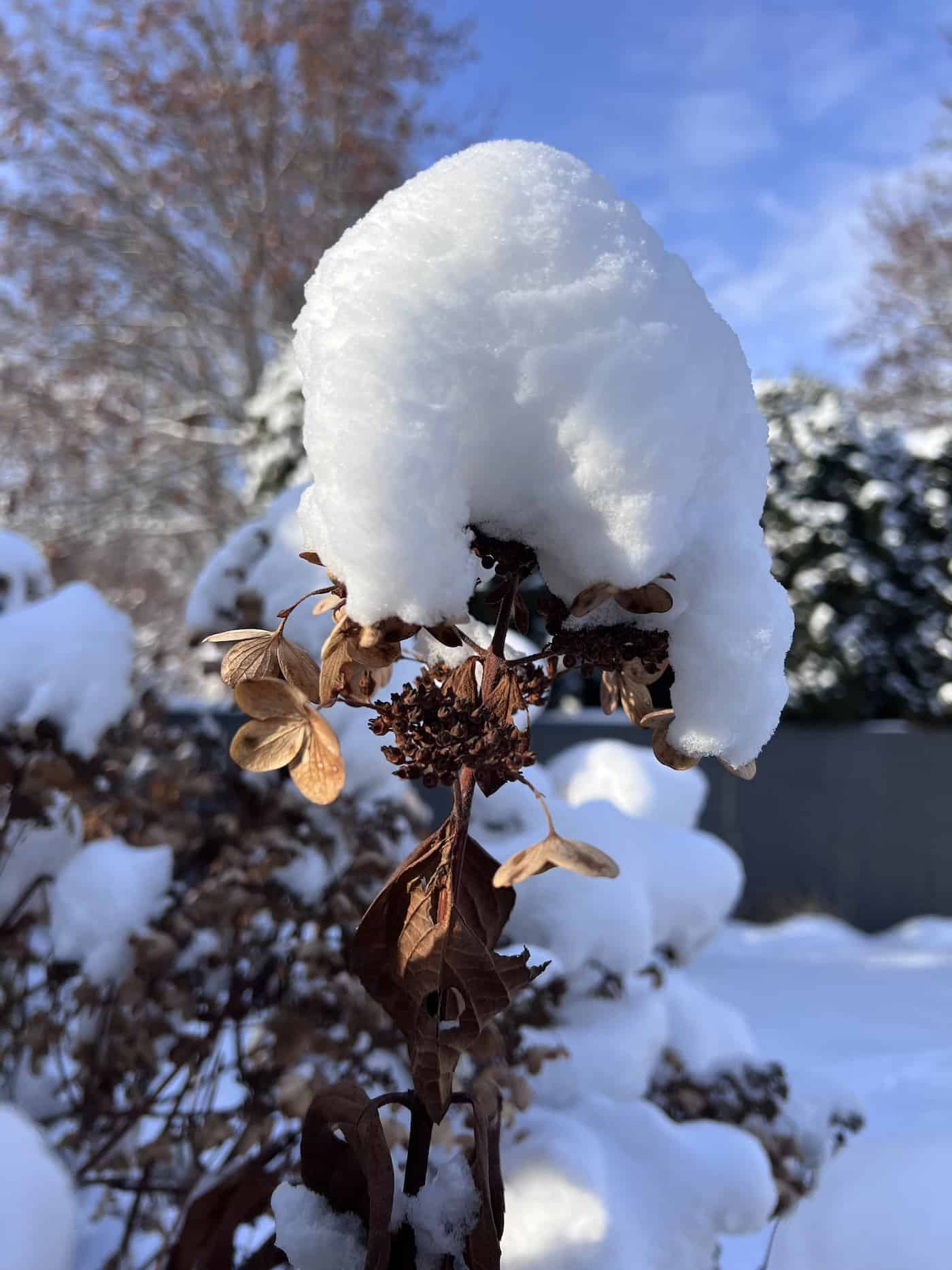To care for a hydrangea tree in winter, keep it well-watered until the ground freezes. In areas with mild winters, continue watering it deeply on an infrequent basis, depending on rainfall and soil moisture.
In late fall to early spring, you can also top-dress the soil with compost. Flowers are sometimes deadheaded in the fall but can be left on the plant to overwinter. Gardeners in particularly harsh climates may wish to wrap the canopy in burlap during the winter.
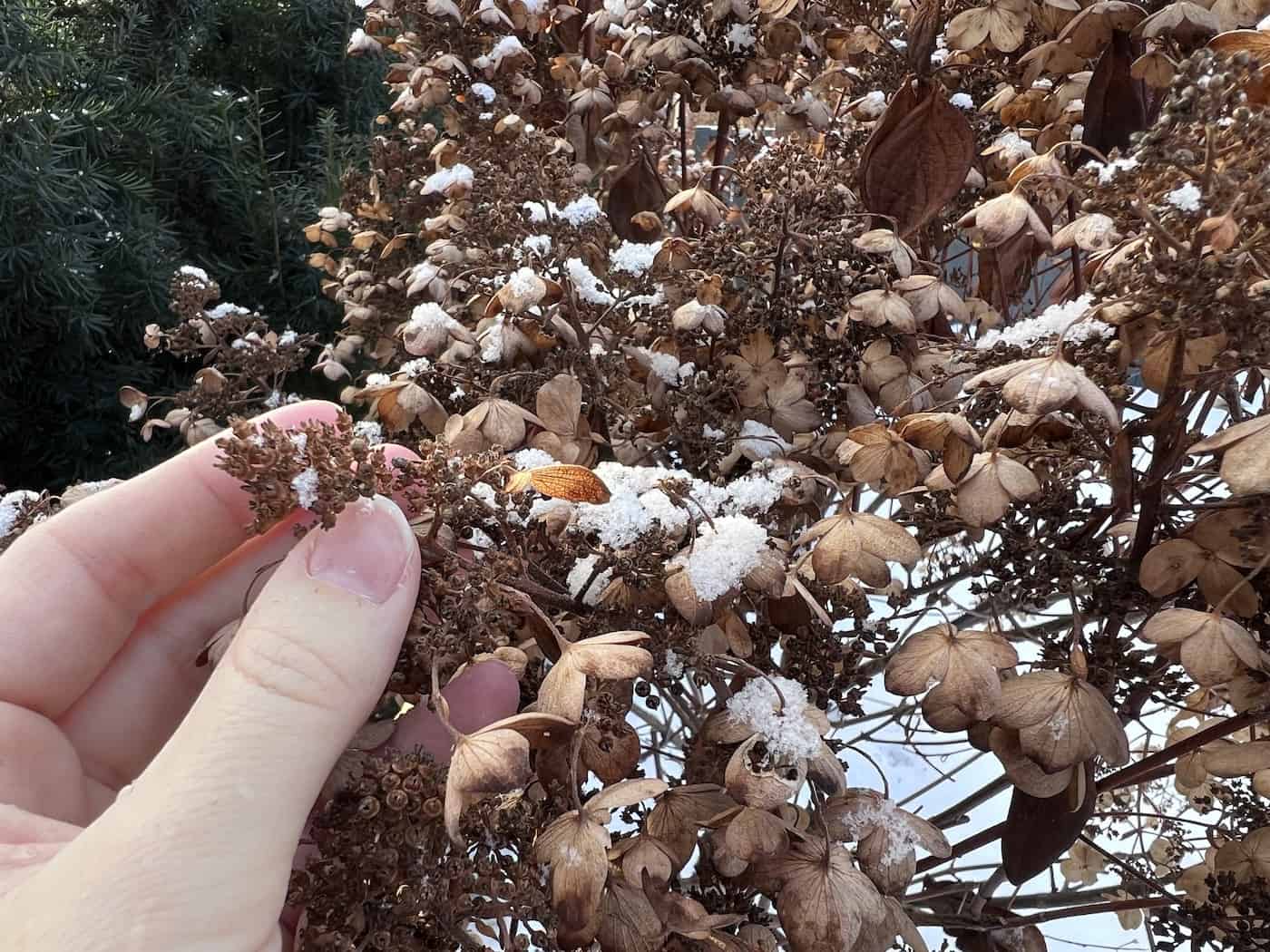
Care basics for a hydrangea tree in winter
Regardless of your hydrangea’s growing location, there are a few winter care basics that you need to follow. These include watering your hydrangea tree (unless the ground is frozen), mulching the soil, and pruning your hydrangea. All of these are important for the health of your hydrangea.
Gardeners in areas with mild winters should keep the plants watered in the winter, as winter winds can dry out the plants’ foliage. If your hydrangea tree is located in an area where the soil is frozen, it does not need to be watered until the ground thaws.
Adding mulch to your garden can also help your hydrangea plants of all types survive the cold. This will provide insulation for your hydrangea roots and help the soil retain moisture. Ideally, you should add the mulch during the early winter. Thick protective mulch should be removed in the spring, leaving only surface mulch with no mulch against the stem itself.
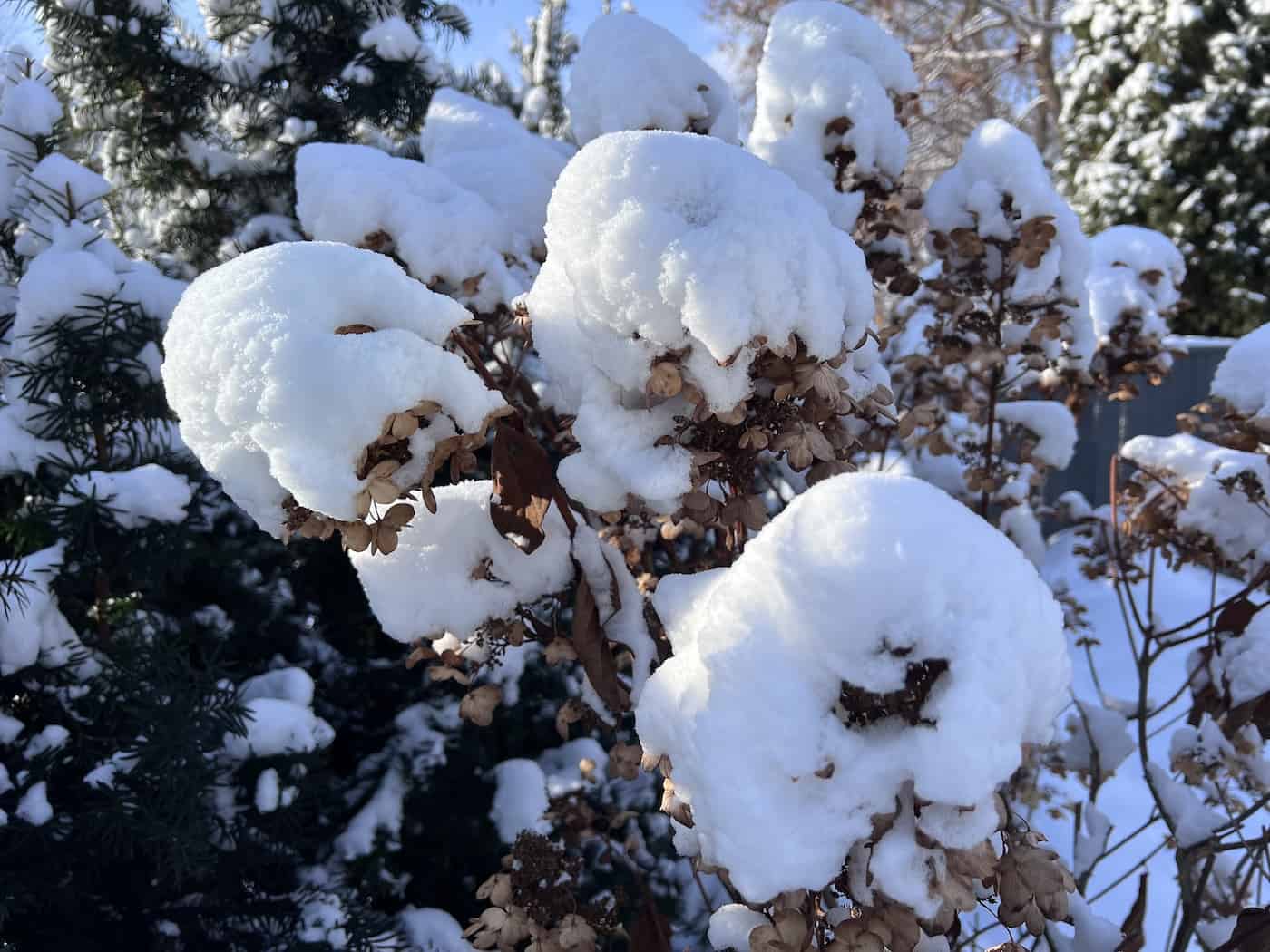
A good hydrangea care regimen should also include fertilization. Your hydrangea will benefit from a slow-release fertilizer that contains organic material like homemade compost. This will stimulate new growth in the spring.
It may also be a good idea to cut off dead blooms. This helps prevent your hydrangea from bowing under heavy snow loads or in the wind.
When watering your hydrangea, it’s a good idea to try to avoid soaking the leaves. This can lead to gray mold and botrytis. Water at the base of the plant instead. Optimal watering times are less important during the winter, but during other seasons are in the morning or the evening.
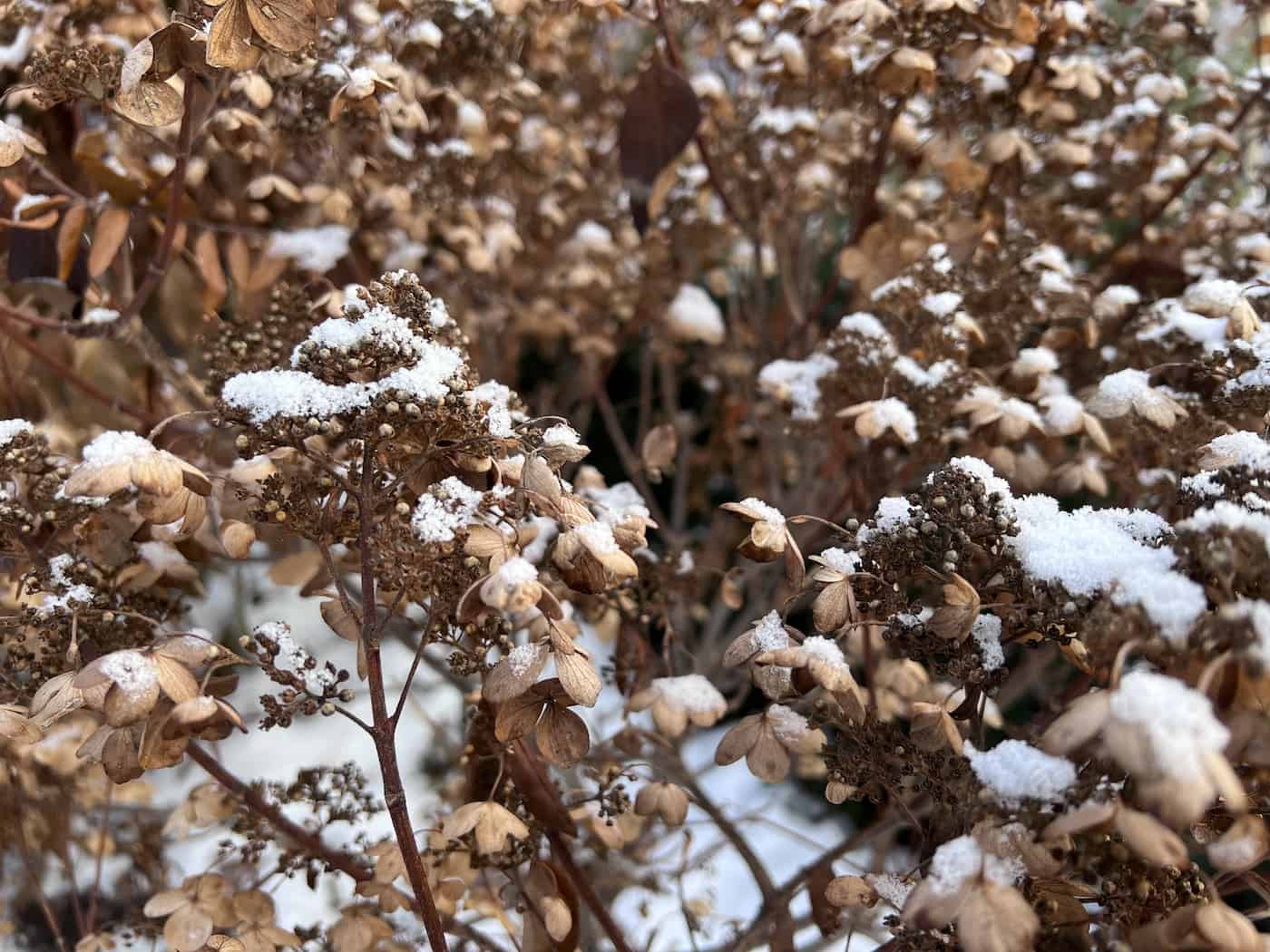
How to prepare a tree-form hydrangea for winter
During the winter, your tree-form hydrangea needs proper care. Watering and fertilizing it can help it survive the colder weather. It can also benefit from pruning, but this should be limited in the fall.
Fall pruning of panicle hydrangeas (the species from which most tree form standards are made) is mainly about keeping the plant healthy and tidy. Remove any branches that are dead, diseased, or damaged. Next, remove branches growing in odd directions, such as inward or crossing, and rub another branch. Lastly, you can either deadhead the remaining flowers off or leave them on for the wintertime.
How to care for a hydrangea tree during the winter
Providing hydrangeas with the proper care during the winter can make a big difference. A few simple techniques can help keep your plants looking their best.
The first thing you need to do is to make sure that your hydrangea tree gets plenty of water. Winter winds can dry out the stems of the plant, leaving the branches desiccated and prone to breakage. Make sure the plant goes into the cold weather with ample water inside its cells.
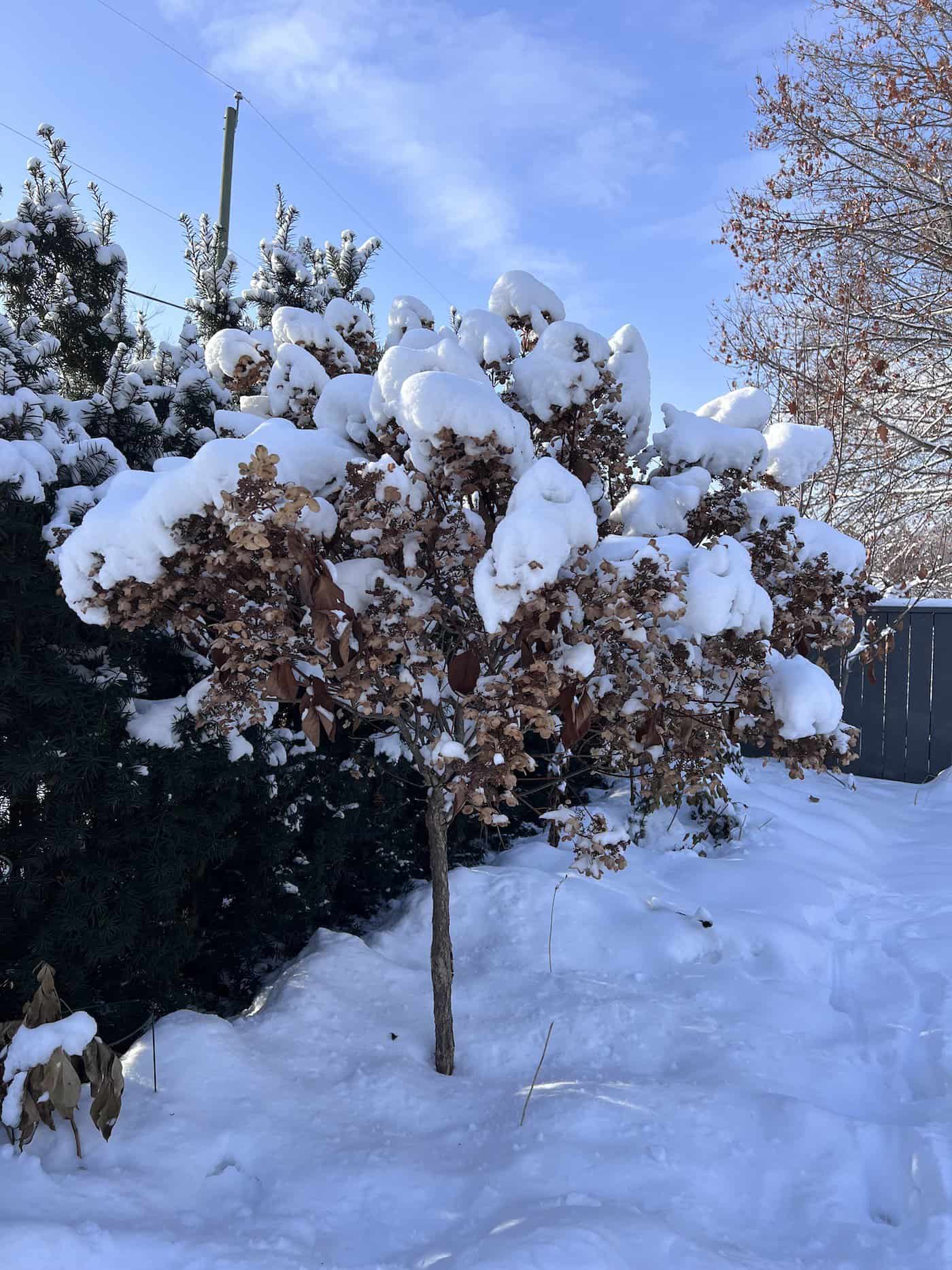
In cold areas, consider adding a thick layer of protective winter mulch around the base. This will help to protect the hydrangea’s roots from freezing temperatures and from sudden temperature swings. It will also retain moisture in the soil, which is necessary during the dry, colder months.
Protective winter mulch is different from year-round soil mulch. Year-round soil mulch is usually a 2-3 inch deep layer of organic mulch such as composted yard trimmings. Protective winter mulch, however, is generally a bulk material piled up around the base of the plant after the ground freezes. You can use compost, straw, leaves, or even snow to insulate the base in the coldest climates.
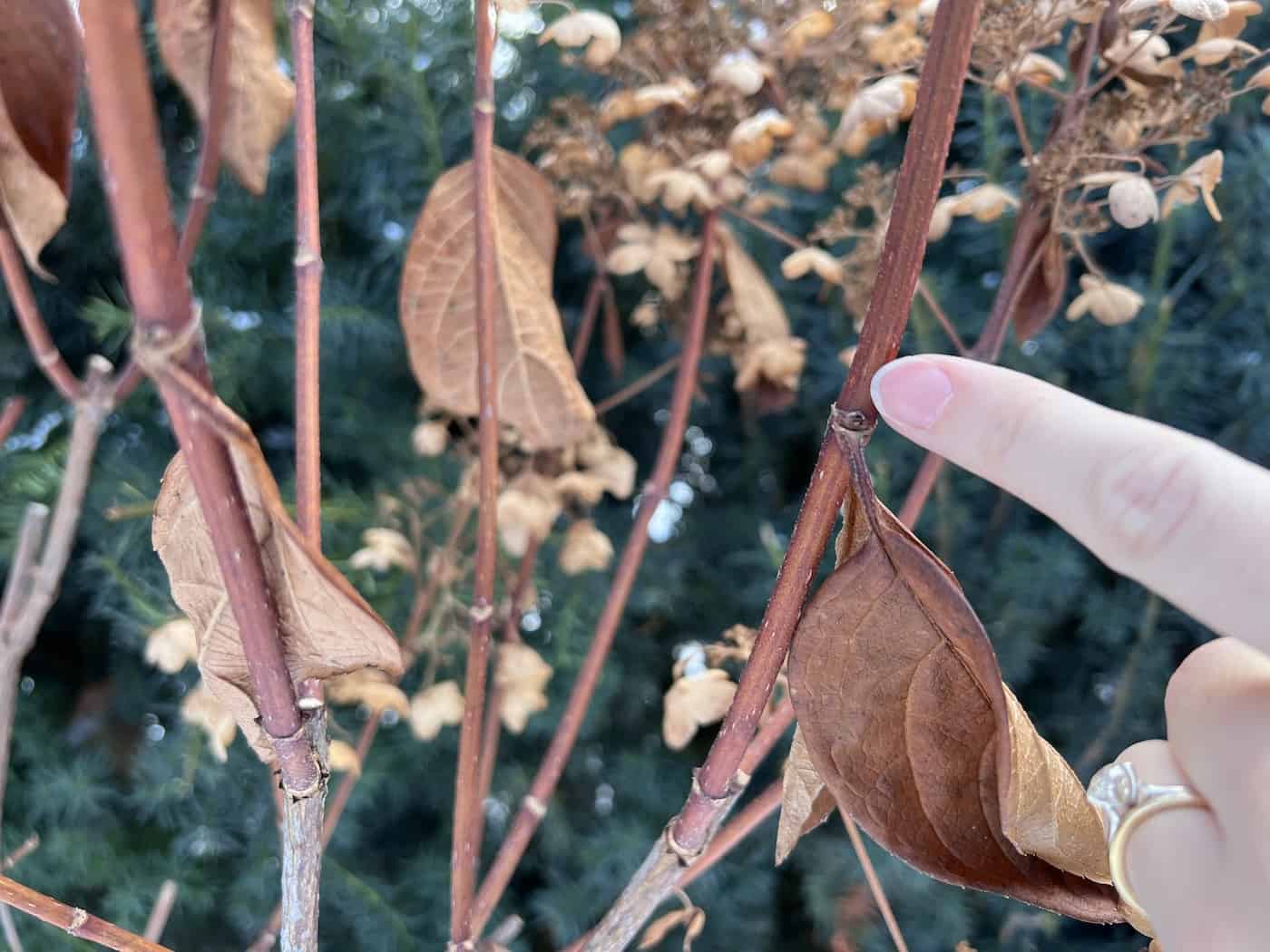
How to prepare a standard hydrangea for spring
Hydrangeas come out of winter dormancy in early spring. You can take a few important steps each year to get them ready for the big flush of growth as the days get longer and the temperature warms.
Start by giving the plant its annual pruning. Most hydrangea trees are panicle hydrangeas, which are typically pruned in late winter or early spring. Remove any dead, damaged, or diseased branches. Then remove any crossing/rubbing branches. Lastly, shorten the remaining branches by 1/3 if you like, leaving a nice spherical ball.
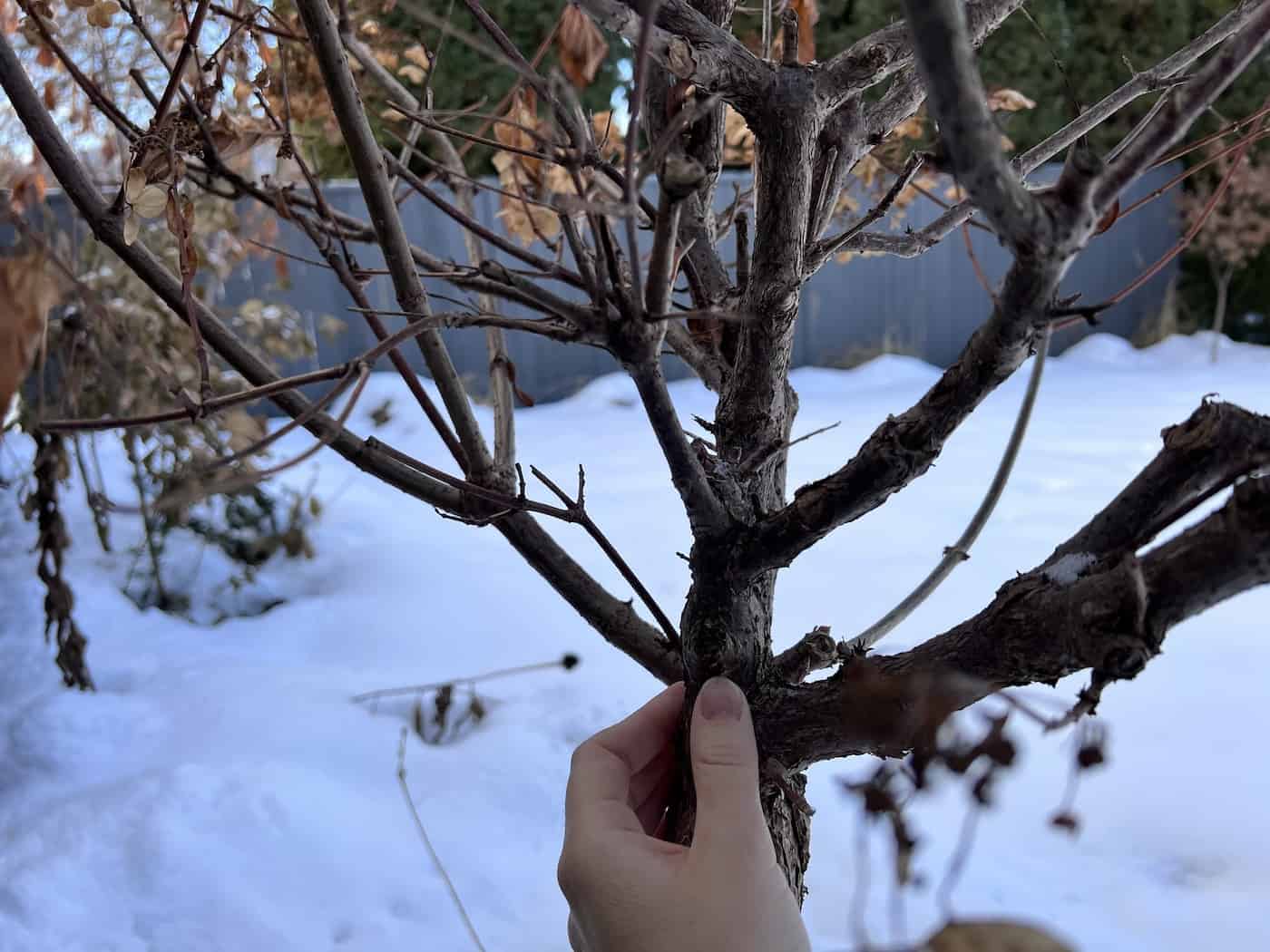
Spring is also a great time to fertilize. When you decide on a fertilizer, remember to choose a slow-release type if you know you’ll only get around to feeding the plant once or twice this year. This will allow the roots to absorb nutrients over the growing season. Some fertilizers are designed specifically for shrubs and trees, but most all-purpose outdoor fertilizers will work just fine.
In addition to nutrient-rich soil, I like to add a layer of fresh mulch around the base of the plant. This will protect the roots from fluctuating temperatures and retain moisture in the soil. It’s best to add the mulch in the early part of the spring before perennials and flowering bulbs start popping out of the soil and making mulch application more complicated.
